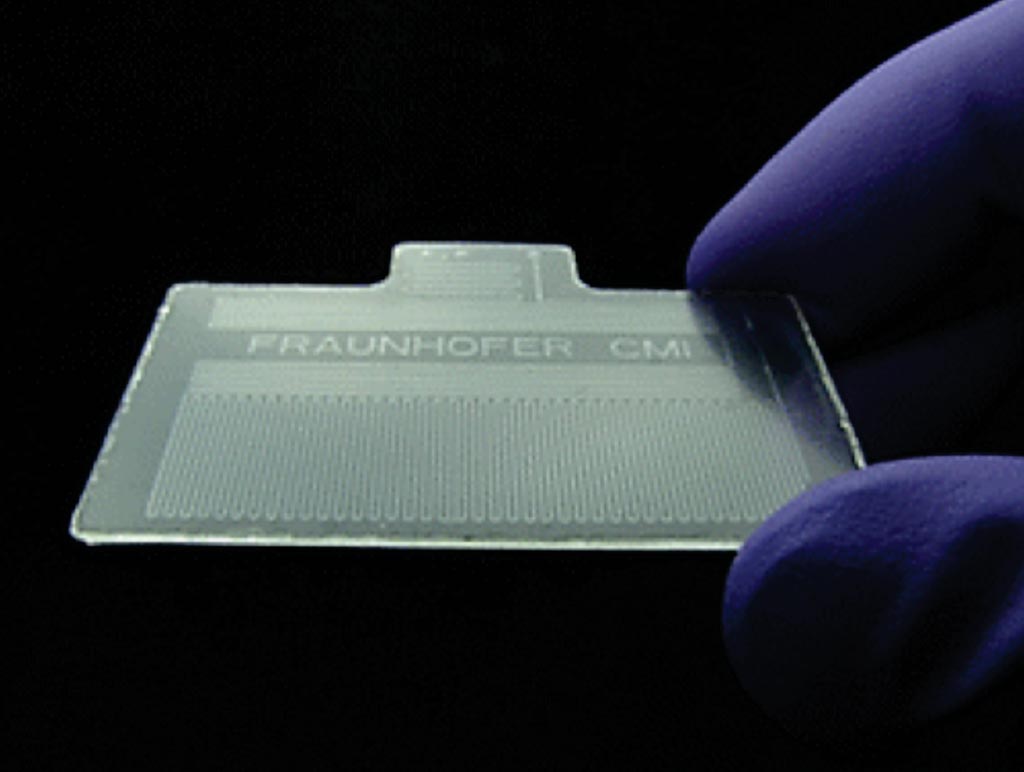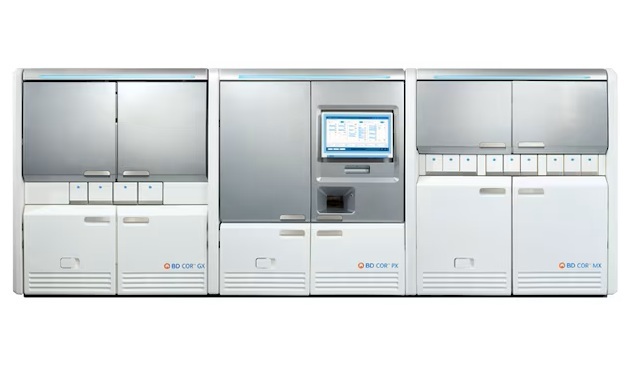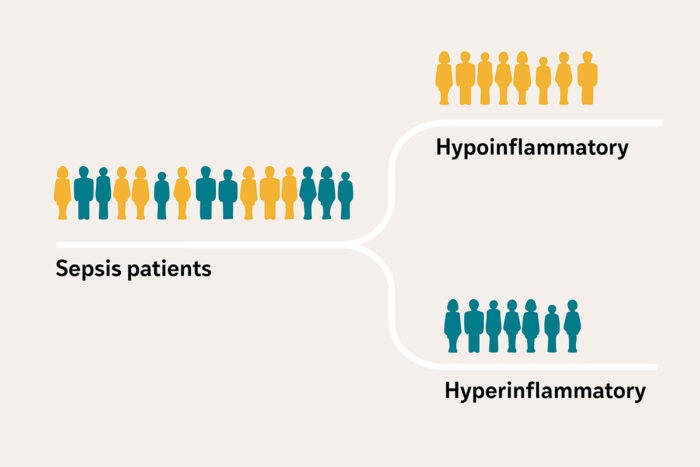Molecular Test Device Developed for RNA Viral Detection
By LabMedica International staff writers
Posted on 14 Feb 2018
A microfluidic, continuous-flow, quantitative reverse transcriptase polymerase chain reaction (qRT-PCR) system to detect viral RNA targets has been developed and its creator have been working to reduce manufacturing costs and identify potential partners for commercialization.Posted on 14 Feb 2018
The qRT-PCR system has been used to detect the RNA-directed RNA polymerase L (L-gene), a biomarker for the Ebola virus, in a spiked liquid sample. The present aim is to develop point-of-care (POC) devices based on the technology to diagnose infectious disease in low-resource areas.

Image: A photograph of the quantitative reverse transcriptase polymerase chain reaction (qRT-PCR) thermoplastic chip (Photo courtesy of Fraunhofer USA).
Scientists at The Fraunhofer USA Center for Molecular Biotechnology (Newark, DE, USA) developed the microfluidic chip that contains a syringe pump, heaters, and an optical detection system. The team used the syringe pump to introduce the liquid sample and PCR reagents into the system through a microfluidic connector. The purified RNA solution enters a mixing chamber and is then combined with the master mix, which contains the enzymes and other reagents required to conduct amplification. The mixture travels through a reverse transcription zone, where reverse transcription enzymes convert RNA to complementary DNA.
The investigators tested two one-step reverse transcription PCR (qRT-PCR) mastermixes. The team first used the commercial Affymetrix VeriQuest master mix, which is composed of reverse transcriptase and DNA polymerase. The team also developed a custom-made one-step master mix that combines Affymetrix's VeriQuest master mix and the fast DNA polymerase included in Affymetrix's USB fast quantitative PCR probe master mix.
The newly formed complementary DNA and reagents travel through a 95° Czone, where DNA polymerase activates and the double-stranded DNA is melted. The sample then travels to the thermal cycling area, moving through 40 repetitive cycles and between areas heated to 95 °C and 62 °C. The DNA undergoes melting at the higher temperature zone portion of each loop, whereas annealing and polymerization occurs at the lower temperature zone. The total chip channel volume is 25 µL, allowing low reagent consumption and therefore reducing consumable costs.
The optical detection system can then be used to measure fluorescence and real-time DNA amplification. The team demonstrated that that the system performs qRT-PCR in 30 minutes, compared to 80 minutes for standard conventional benchtop thermocyclers. Although they determined that their custom master mix generally delivered better results, they determined the assay's limit of detection using the commercial mix because it would be more readily translated to the market. Using the commercial mix and the Ebola virus RNA as the target, the team achieved a limit of detection of 10 RNA copies per microliter.
In the future, the authors plan to focus on sample pretreatment for RNA extraction from plasma, urine, and saliva, as the extraction of high-quality RNA plays a crucial role in producing successful qRT-PCR results. The team aims to market the device at a price of USD 2,000, with disposable test chips for USD 0.50.
Related Links:
The Fraunhofer USA Center for Molecular Biotechnology














